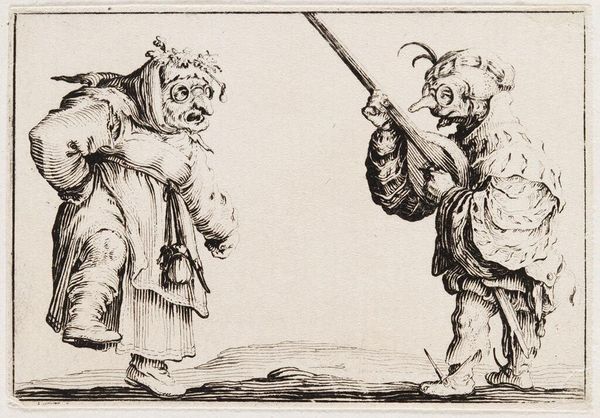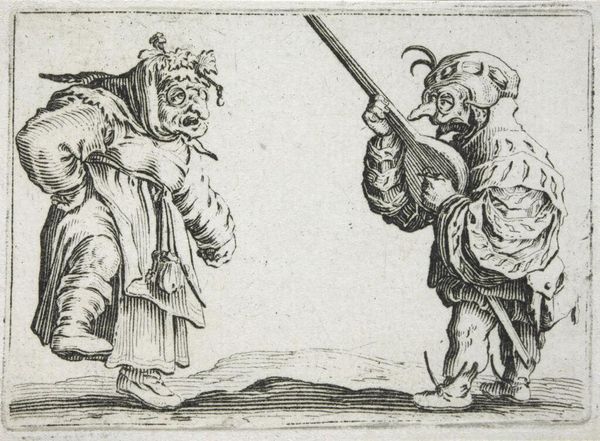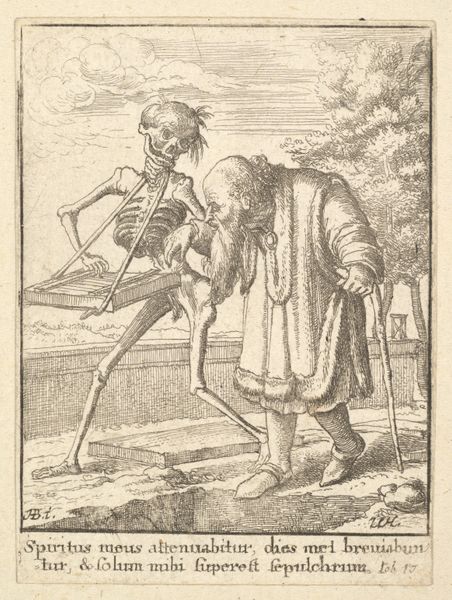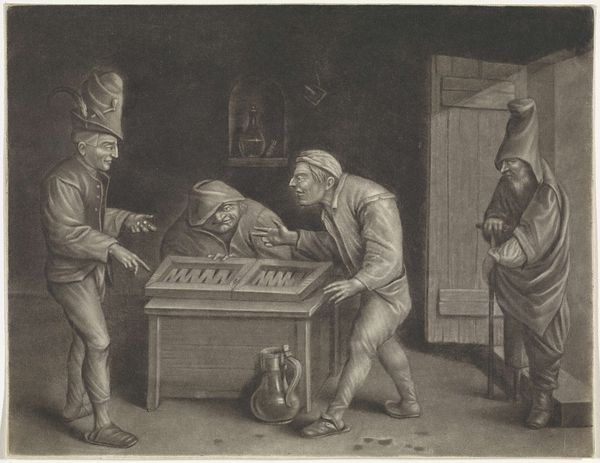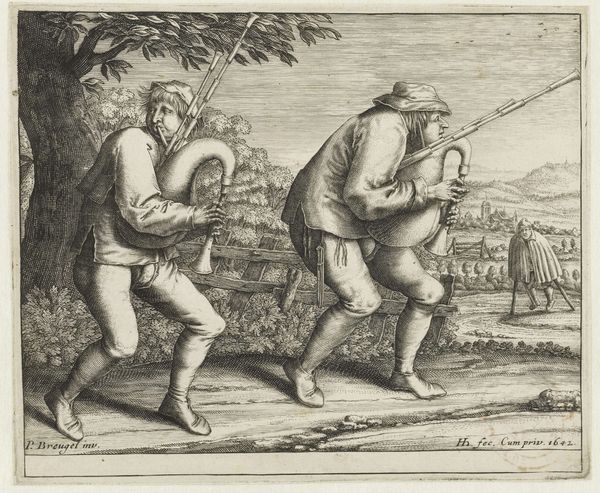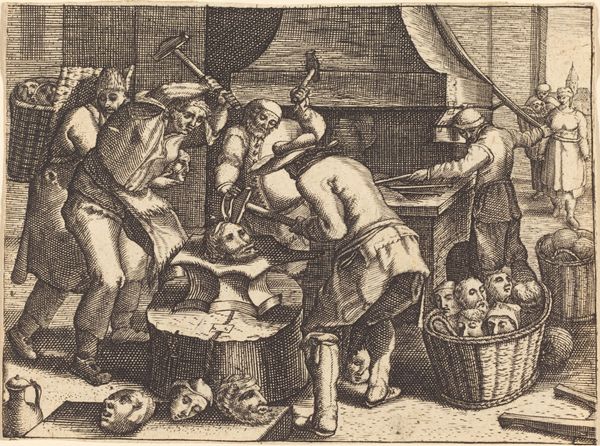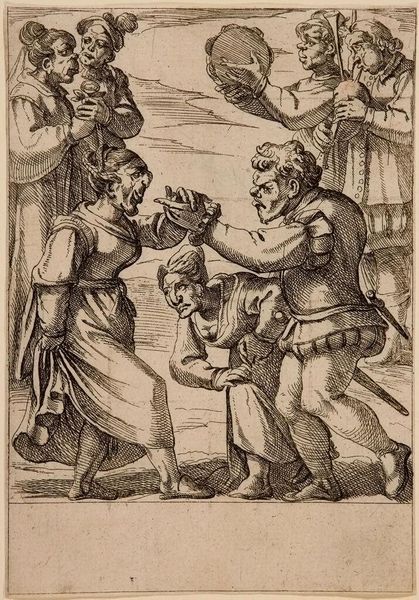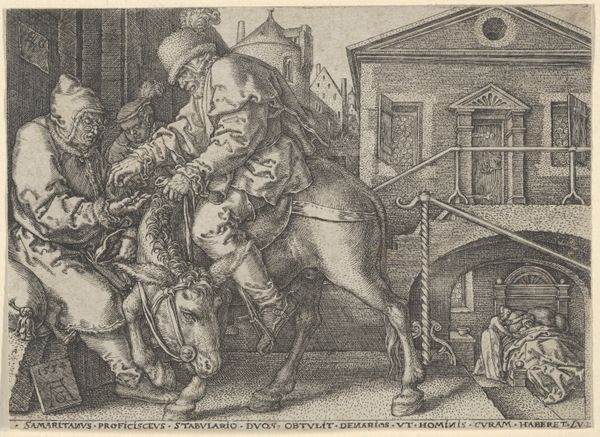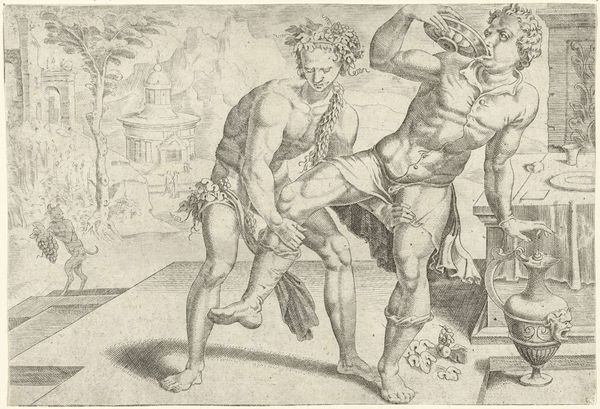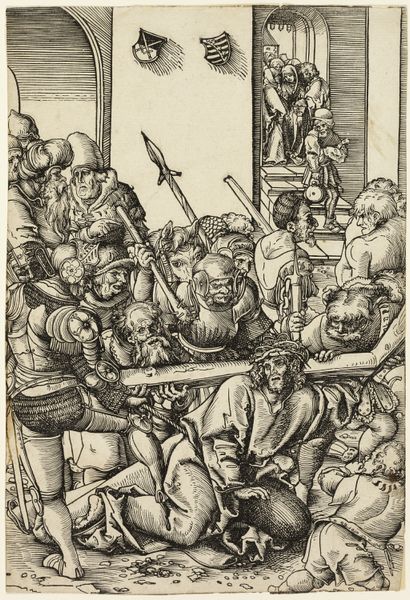
print, engraving
#
portrait
#
imaginative character sketch
#
light pencil work
#
quirky sketch
#
narrative-art
#
baroque
# print
#
pencil sketch
#
sketch book
#
figuration
#
personal sketchbook
#
sketchwork
#
line
#
sketchbook drawing
#
portrait drawing
#
genre-painting
#
engraving
#
fantasy sketch
Dimensions: height 125 mm, width 158 mm
Copyright: Rijks Museum: Open Domain
This print, "Drie zotten," or "Three Fools," was made in the Netherlands in 1642 by Hendrick Hondius I. It depicts three figures in jester costumes, each holding a staff topped with a grotesque mask. Images of fools and jesters were common in Dutch art and culture of this period, often used to satirize human folly and social customs. The jester figure can be traced back to medieval court culture, an individual whose license to mock the powerful served as a kind of social safety valve. In the 17th century Netherlands, a rising merchant class found jesters useful to critique aristocratic norms. Note the way the figures press up against the frame and address the viewer directly, implicating us in their mad world. The print's circulation through the art market reflects the increasing commercialization of art in the Dutch Golden Age. To understand its meaning more fully, one might consult period literature on social satire and the history of festive culture. The image serves as a reminder that art is never made in a vacuum, but always responds to specific social and institutional conditions.
Comments
No comments
Be the first to comment and join the conversation on the ultimate creative platform.

